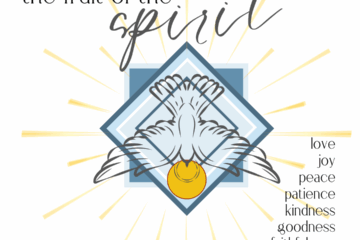Now even the first covenant had regulations for worship and an earthly sanctuary. For a tent was prepared, the outer one, in which were the lampstand and the table and the bread of the Presence; it is called the Holy Place. Behind the second curtain stood a tent called the Holy of Holies, having the golden altar of incense and the ark of the covenant covered on all sides with gold, which contained a golden urn holding the manna, and Aaron’s rod that budded, and the tables of the covenant; above it were the cherubim of glory overshadowing the mercy seat. Of these things we cannot now speak in detail.
These preparations having thus been made, the priests go continually into the outer tent, performing their ritual duties; but into the second only the high priest goes, and he but once a year, and not without taking blood which he offers for himself and for the errors of the people.
Hebrews 9: 1-7 (Epistle of the feast of the Belt of the Virgin Mary, August 31)
The Ecclesiastical New Year of the Orthodox Church begins on September 1 each year. The first major feast-day of the Ecclesiastical Year is September 8, the Nativity of the Virgin Mary. The last major feast-day is the Dormition, which we just celebrated on August 15. The Ecclesiastical Year has feasts of the Virgin Mary as its two bookends. The very last day of the year, August 31, also is a feast of the Virgin Mary, albeit a minor feast. It is known as the feast of the Belt/Sash of the Virgin Mary.
We know that when the Virgin Mary reposed, all of the Apostles were translated on clouds to Jerusalem, to be present for her funeral. All of them, except for Thomas. Ironic that Thomas was the one who was not present on the evening after the Resurrection when Christ appeared to the disciples. Three days after her funeral, Thomas arrived in Jerusalem and asked to see the body of the Virgin Mary, so that he could offer proper veneration. When he and the other apostles arrived at the tomb and opened it, they found that her body was missing. There are two accounts of what happened next. One is that the belt of the Virgin Mary was laying in the tomb, and the other is that the Virgin Mary appeared and gave her belt to Thomas.
Various words are used in naming the feast on August 15. One is the Koimisis or the Falling Asleep, or Dormition, of the Virgin Mary. Another word is “Metastasis”, which means “moving,” and refers to the moving of the Virgin Mary from earth to heaven. This is where the idea of the “Assumption” comes from, that the Virgin Mary was assumed from earth to heaven.
The Virgin Mary is the greatest human being ever created, and she ranks higher in honor than the angels. She is the par excellence example of what we are to be in life—obedient to God. She also sets the example of what will happen to us in death—that we will be resurrected not only in soul, but in body. The fact that only her belt remained behind is a testament to this.
The exact location of the belt in the early centuries of Christianity is not known, although tradition holds that is remained in Jerusalem. It was taken to Constantinople in the fifth century. During the twelfth century, an official feast day for the belt of the Virgin Mary was placed on the calendar for August 31. In the fourteen century, the emperor donated the belt to the monastery of Vatopedi on Mount Athos, where it remains until today.
The Epistle lesson, from Hebrews 9:1-7, is read on some of the other feasts of the Virgin Mary as well. In it, we read about the first covenant and the set up of the temple. As read about the Ark of the Covenant, the first “tabernacle.” And all of the appointments around it. The priests who ministered in the temple, in this most holiest of places, were not even allowed to enter into the holy of holies. Only the high priest could go once a year. The children of Israel believed that God resided in the temple, which is why the temple was both a holy place, and the innermost part of the temple was inaccessible to anyone.
The Virgin Mary is called the Theotokos, which means “God-bearer.” She is a tabernacle, because her womb contained God, just like the early temple. Through the sacrament of Holy Communion, we also become tabernacles. And access is God is not restricted to the church, or the Divine Liturgy. We can access God through prayer at any time. We can experience God in any place. And in the Divine Liturgy, we are able to witness the whole service, the gates of the altar are open so we can see into the Holy of Holies.
The precious garment that you wore about your body that hosted God, O all-blessed Theotokos, truly is power unassailable for your City and a treasure whose blessings are perpetual, O only Ever-virgin who bore a child. (Kontakion, Feast of the Belt of the Virgin Mary, Trans. by Fr. Seraphim Dedes)
Today’s feast reminds us of our history, where we come from. It reminds us of our present, that we are called to be God-bearers each day. And it reminds us of our future—that there is a resurrection of both soul and body for those who receive the gift of salvation from the Lord.

0 Comments